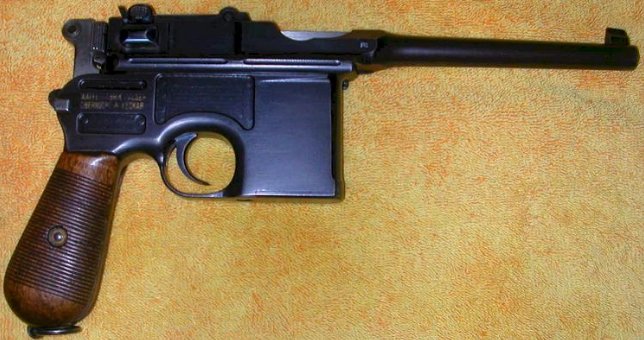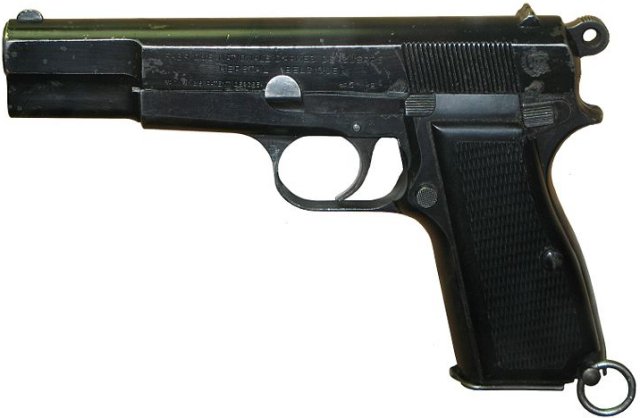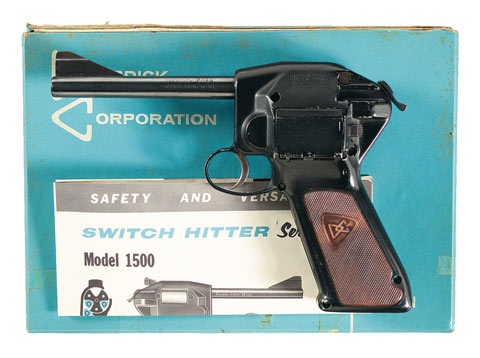L. Neil Smith, in an ideal world (that is, after the Libertarian revolution), would like to do some serious gunsmithing:
I have some interest in reclaiming good technology that has been abandoned by our civilization, usually for the most stupid of reasons. Living in a free country would mean that I could return to a dream I’ve had for years, of becoming a weapons-manufacturer. For example, as a gunsmith, I don’t believe that history and humanity are quite through with the design known as the “Broomhandle Mauser”, the first commercially successful semiautomtic pistol. The Broomhandle is so different in conception and execution from the Browning-invented weapons we’re all used to, as to seem like the product of an alien mind.
If you’re not familiar with the Broomhandle Mauser, here’s a picture from http://www.g6csy.net/c96/database.html:

Some folks don’t like the Mauser’s grip, which I find perfectly comfortable, and seem to forget that we almost never shoot a revolver today with handles shaped like its frame. I love neoprene grips like the Pachmayr “Presentation” model, myself. They make shooting magnums pleasant. Others don’t like magazines situated in front of the trigger, rather than inside the handle, but they’re happy with sport-utility rifles like the AR-15 and the AK-47 built exactly the same way.
What killed the “Broomie” was the inadequate cartridge, 7.63x25mm, it was made for. By the time a more effective offerng was available — 9mm Mauser Export, which rivaled the .357 Magnum — it was too late. Browning designs and their imitators had taken the field over. But with modern steels and production techniques, in effective calibers — like .40 S&W, 10mm, or .45 ACP — there is still a place for the Mauser design. I’d even like to make a miniature that shoots .22 Long Rifle.
Make no mistake, I absolutely venerate St. John Moses Browning’s 1911, and his P35 Browning High Power is also “of the best” — or at least it would be if it could be made for a worthwhile cartridge without messing up its marvelous handling qualities, as I find the .40 caliber version does. I have some fresh ideas in this area, beginning with a 145-grain .375 bullet loaded into a modified 8mm Nambu parent case.
The Browning 9mm was first handgun I ever fired, and is still one of my favourites:

At the same time, however, I would bring the Dardick pistol back, an absolutely revolutionary design that combines the best qualities of automatics and revolvers, without any of the drawbacks of either. Critics at the time of its introduction said it looked too weird — rather like an oldtime Weller soldering gun — but how do you suppose the Broomhandle, the Luger, and the 1911 looked to generations of revolver-shooters? Aesthetics are arbitrary, and shooters would get used to the Dardick as they did to other weapons, if it served them well.
The Dardick was indeed an odd-looking weapon:

The Dardick used special plastic-cased cartridges with a roundly triangular, or trochoidal, cross-section, loaded with a .38 caliber bullet. It was pretty clearly aimed at the police market, where the standard at the time (the late 1950s) was the wildly-successful Smith & Wesson Model 10, of which it is said more than six million were produced.
There’s no reason that the Dardick concept couldn’t be mated with much better calibers than it was offered in. With its double-action works, and an astonishing magazine capacity (in 1958) of fifteen “trounds”, it might well have nudged the Model 10. But it fell victim, not to the market, but to a corporate boardroom dispute, and history lost one of the most effective devices for personal defense ever invented.
As Neil pointed out in one of his books, the Dardick was the answer to a bad crime writer’s prayers: it was literally an automatic revolver. (For those following along at home, an “automatic” has a magazine holding the bullets which are fed into the chamber to be fired by the action of the weapon: fire a bullet, the action cycles, clearing the expended cartridge and pushing a new one into place, cocking the weapon to fire again. A “revolver” holds bullets in the cylinder, rotating the cylinder when the gun is fired to put a new bullet in line with the barrel to be fired. The Dardick is the only example I know of that combines both in one gun.)
It’s probably a good thing that I live in Canada, where owning handguns is a legal marathon, otherwise I’d probably have another expensive collecting hobby . . .



